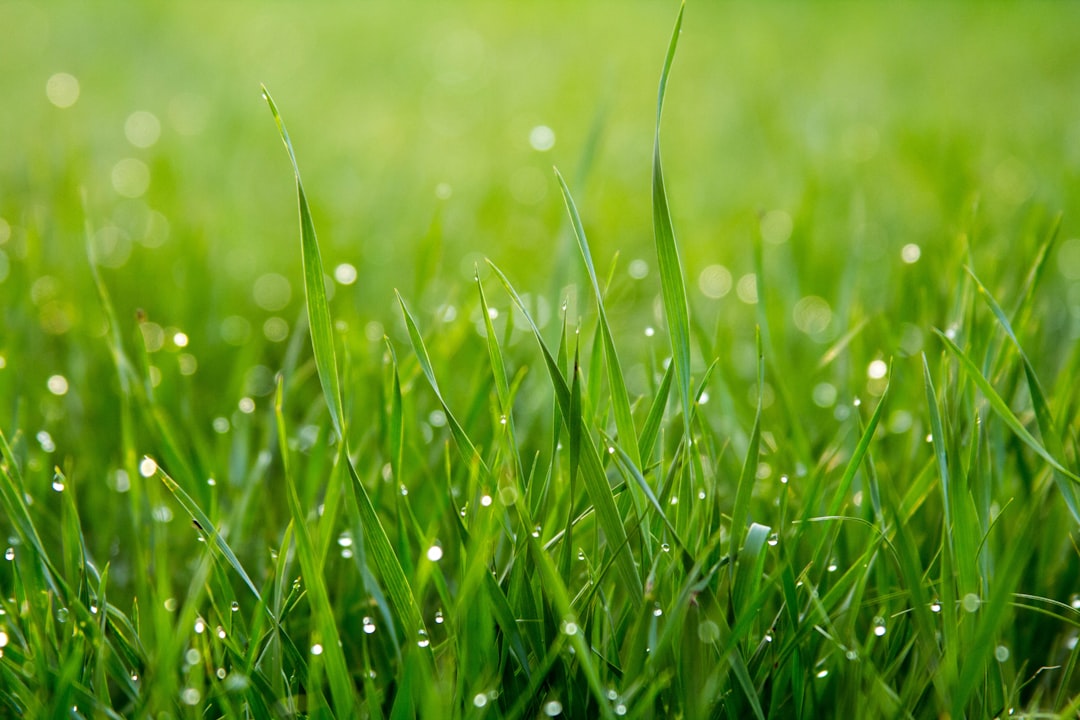Grass allergy is a common form of allergic rhinitis, often triggered by the pollen released from various grass species during their flowering season. This condition affects millions of individuals worldwide, particularly in temperate regions where grasses thrive. The immune system mistakenly identifies harmless grass pollen as a threat, leading to an overreaction that results in allergy symptoms.
The most prevalent grasses associated with allergies include Bermuda grass, Timothy grass, Kentucky bluegrass, and ryegrass. Each of these species releases pollen at different times of the year, which can complicate the management of symptoms for those affected. The underlying mechanism of a grass allergy involves the production of immunoglobulin E (IgE) antibodies.
When a person with a grass allergy inhales pollen, their immune system produces these antibodies, which then trigger the release of histamines and other chemicals. This process leads to inflammation and irritation in the nasal passages, eyes, and other areas of the body. Understanding this immune response is crucial for individuals suffering from grass allergies, as it highlights the importance of avoiding exposure to allergens and seeking appropriate treatment options.
Key Takeaways
- Grass allergy is a common allergic reaction to pollen from grass, causing symptoms such as sneezing, itching, and congestion.
- Symptoms of grass allergy include itchy and watery eyes, runny nose, sneezing, and coughing.
- Avoiding exposure to grass allergens can be achieved by staying indoors during peak pollen times, keeping windows closed, and wearing a mask when doing outdoor activities.
- Grass allergy can be managed with over-the-counter antihistamines, decongestants, and nasal corticosteroids.
- Natural remedies for grass allergy relief include saline nasal rinses, herbal supplements, and acupuncture.
Identifying Symptoms of Grass Allergy
Recognizing the symptoms of a grass allergy is essential for effective management and treatment. Common symptoms include sneezing, nasal congestion, runny nose, itchy or watery eyes, and postnasal drip. These symptoms can often be mistaken for those of a common cold or other respiratory infections, making it vital for individuals to pay attention to the context in which they occur.
In addition to respiratory symptoms, some individuals may experience skin reactions such as hives or eczema flare-ups when exposed to grass pollen. These skin reactions can be particularly bothersome and may require different management strategies than respiratory symptoms.
Furthermore, some people may also experience fatigue or difficulty concentrating due to the persistent discomfort caused by their allergy symptoms. Understanding these varied manifestations can help individuals identify their condition more accurately and seek appropriate interventions.
Avoiding Exposure to Grass Allergens

Avoiding exposure to grass allergens is a critical step in managing grass allergies effectively. One of the most straightforward strategies is to stay indoors during peak pollen seasons, which typically occur in late spring and early summer. Monitoring local pollen forecasts can help individuals plan their outdoor activities accordingly.
On days when pollen counts are high, it is advisable to limit outdoor exposure, especially during midday when pollen levels tend to peak. In addition to timing outdoor activities, individuals can take practical steps to minimize exposure while outside. Wearing sunglasses can help protect the eyes from pollen, while a wide-brimmed hat can prevent pollen from settling on hair and skin.
After spending time outdoors, it is beneficial to change clothes and shower to remove any pollen that may have clung to the body. Keeping windows closed and using air conditioning can also help reduce indoor pollen levels, creating a more comfortable living environment for those with grass allergies.
Managing Grass Allergy with Medication
| Medication | Effectiveness | Side Effects |
|---|---|---|
| Antihistamines | Effective in reducing allergy symptoms | Drowsiness, dry mouth |
| Nasal corticosteroids | Reduces inflammation and congestion | Nosebleeds, sore throat |
| Decongestants | Relieves nasal congestion | Increased heart rate, insomnia |
For many individuals suffering from grass allergies, over-the-counter medications can provide significant relief from symptoms. Antihistamines are commonly used to alleviate sneezing, itching, and runny nose by blocking the action of histamines released during an allergic reaction. Popular options include cetirizine (Zyrtec), loratadine (Claritin), and fexofenadine (Allegra).
These medications are generally well-tolerated and can be taken as needed or on a daily basis during peak allergy seasons. In addition to antihistamines, nasal corticosteroids such as fluticasone (Flonase) and mometasone (Nasonex) are effective in reducing inflammation in the nasal passages. These prescription or over-the-counter sprays can help alleviate congestion and other nasal symptoms associated with grass allergies.
For individuals with more severe symptoms or those who do not respond adequately to standard treatments, allergists may recommend immunotherapy. This treatment involves gradually exposing the individual to increasing amounts of the allergen over time, ultimately desensitizing their immune response.
Natural Remedies for Grass Allergy Relief
In addition to conventional medications, many individuals seek natural remedies to alleviate their grass allergy symptoms. One popular approach is the use of saline nasal rinses or sprays, which can help clear allergens from the nasal passages and reduce congestion.
Another natural remedy that has gained popularity is the use of local honey. Some proponents believe that consuming honey produced in one’s local area may help build immunity against local pollen allergens. While scientific evidence supporting this claim is limited, many individuals report experiencing fewer allergy symptoms after incorporating local honey into their diets.
Additionally, herbal supplements such as butterbur and quercetin have been studied for their potential anti-inflammatory properties and ability to stabilize mast cells, which release histamines during allergic reactions.
Allergy-Proofing Your Home and Environment

Air Filtration
Investing in high-efficiency particulate air (HEPA) filters for both home air purifiers and HVAC systems can significantly improve indoor air quality. These filters can trap small particles, including pollen, dust mites, and pet dander.
Maintaining Cleanliness
Regularly changing HEPA filters according to manufacturer recommendations ensures optimal performance. Frequent vacuuming with a vacuum cleaner equipped with a HEPA filter can effectively remove allergens from carpets and upholstery.
Additional Tips
Washing bedding in hot water weekly can eliminate dust mites and other potential irritants. Furthermore, minimizing clutter and using washable curtains instead of heavy drapes can make cleaning easier and reduce allergen accumulation.
Seeking Professional Help for Severe Grass Allergy
For individuals experiencing severe or persistent symptoms despite self-management strategies, seeking professional help is crucial. Allergists can conduct specific tests, such as skin prick tests or blood tests, to confirm a diagnosis of grass allergy and identify specific triggers. This information is invaluable for developing an effective management plan tailored to the individual’s needs.
In cases where over-the-counter medications are insufficient, allergists may prescribe stronger medications or recommend immunotherapy as a long-term solution. Immunotherapy involves regular injections or sublingual tablets containing small amounts of allergens to gradually desensitize the immune system over time. This approach has been shown to provide lasting relief even after treatment has concluded, making it an appealing option for those with severe allergies.
Long-term Management and Prevention of Grass Allergy
Long-term management of grass allergies requires a multifaceted approach that combines avoidance strategies with medical treatment and lifestyle modifications. Individuals should remain vigilant about monitoring pollen counts and adjusting their activities accordingly throughout the allergy season. Keeping track of symptom patterns can also help identify specific triggers and inform future management strategies.
Incorporating healthy lifestyle choices can further support long-term management efforts. Regular exercise can enhance overall immune function and reduce stress levels, which may contribute to allergy symptom severity. A balanced diet rich in fruits, vegetables, and omega-3 fatty acids has been associated with improved immune health and may help mitigate allergic reactions.
Additionally, staying well-hydrated supports overall health and can aid in alleviating some allergy symptoms. By understanding grass allergies comprehensively—from their underlying mechanisms to effective management strategies—individuals can take proactive steps toward minimizing their impact on daily life. With appropriate interventions and lifestyle adjustments, many people find they can lead fulfilling lives despite their allergies.
If you suffer from grass allergies, you may be interested in learning more about how media processes impact our daily lives. This article on media processes, production control, and challenges in the new media era delves into the ways in which media influences our perceptions and behaviors. Understanding these processes can help us navigate the overwhelming amount of information we are exposed to on a daily basis, much like managing the symptoms of grass allergies requires understanding the triggers and finding ways to mitigate their effects.
FAQs
What is grass allergy?
Grass allergy is an allergic reaction to the pollen produced by grasses. It is a common type of seasonal allergy, also known as hay fever or allergic rhinitis.
What are the symptoms of grass allergy?
Symptoms of grass allergy can include sneezing, runny or stuffy nose, itchy or watery eyes, coughing, and in some cases, asthma symptoms such as wheezing and difficulty breathing.
How is grass allergy diagnosed?
Grass allergy can be diagnosed through a combination of medical history, physical examination, and allergy testing such as skin prick tests or blood tests to measure the levels of specific antibodies.
How can grass allergy be managed?
Grass allergy can be managed through avoidance of grass pollen, using over-the-counter or prescription antihistamines, nasal corticosteroids, and in some cases, allergy shots (immunotherapy) to build tolerance to grass pollen.
When is grass pollen most prevalent?
Grass pollen is most prevalent during the late spring and early summer months, when grasses are in their peak growing season and release the most pollen.
Can grass allergy lead to complications?
In some cases, grass allergy can lead to complications such as sinus infections, ear infections, and exacerbation of asthma symptoms. It is important to seek medical attention if symptoms worsen or if there are signs of complications.
























+ There are no comments
Add yours